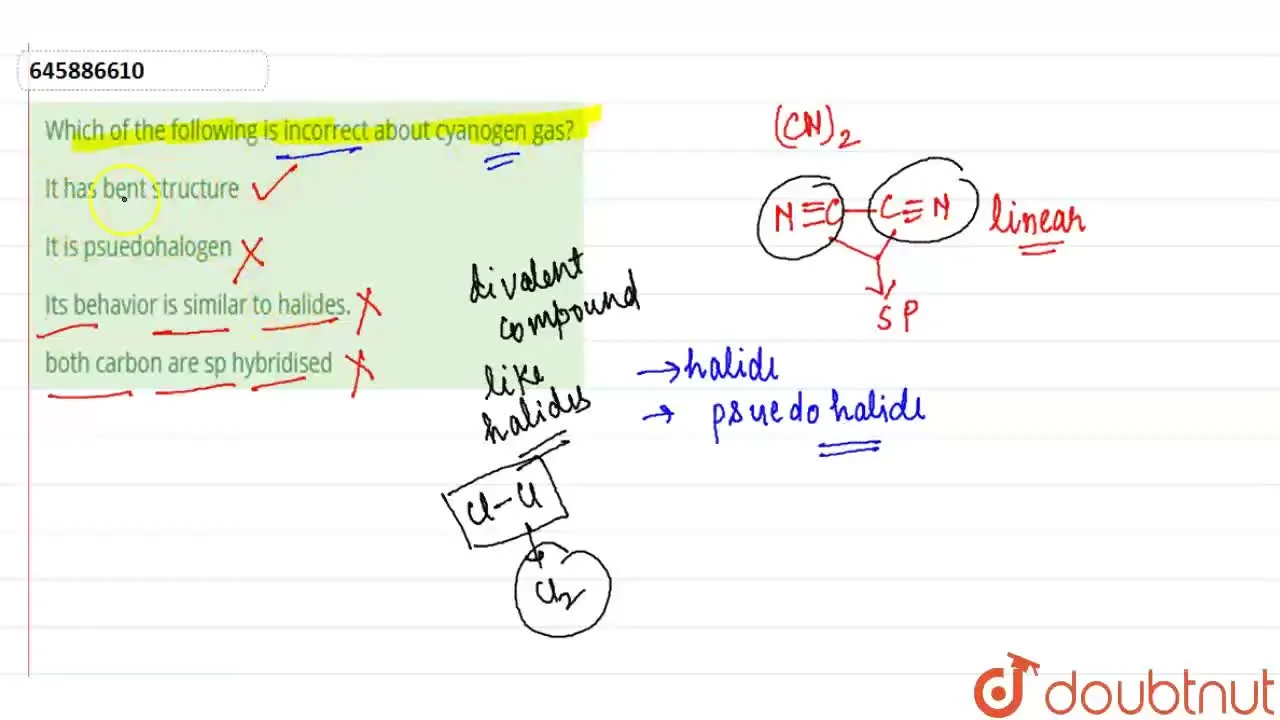Which of the following is incorrect about cyanogen gas?
A
It has bent structure
B
It is psuedohalogen
C
Its behavior is similar to halides.
D
both carbon are sp hybridised
Video Solution
Text Solution
The correct Answer is:A
cyanogen gas is sp hybridised having linear geometry.
|
Updated on:21/07/2023
Similar Questions
Which of the following is incorrect about tyloses
View SolutionWhich of the following is incorrect about cancer ?
View SolutionWhich of the following is incorrect about glycogen ?
View SolutionWhich of the following is incorrect about methanogens ?
View SolutionWhich of the following is incorrect about borax?
View SolutionWhich of the following is incorrect about Cyanobacteria?
View SolutionWhich of the following is incorrect about ethylene?
View SolutionWhich of the following are not correct at 298K?
View SolutionWhich of the following is incorrect about allergy ?
View SolutionWhich of the following is incorrect about graphite ?
View Solution


